|
|
|
| |
|
|
|
|
| |
|
|
|
|
Inhabitation 0.255
Stainless steel, scientific weighing balance, reconstructed vintage laboratory instrument cabinet
2011 (42 h x 46 x 30cm) |
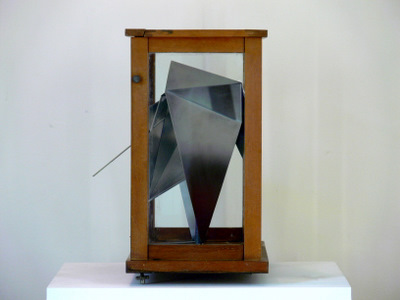 |
|
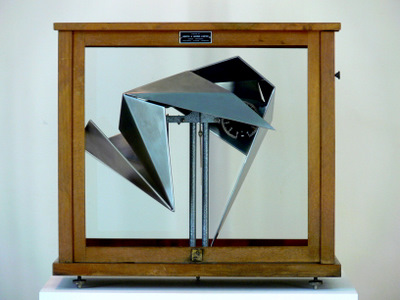 |
| |
|
|
|
|
| |
|
|
|
|
Inhabitation 0.450
Stainless steel, scientific weighing balance, reconstructed vintage laboratory instrument cabinet
2011 (42 h x 46 x 30cm) |
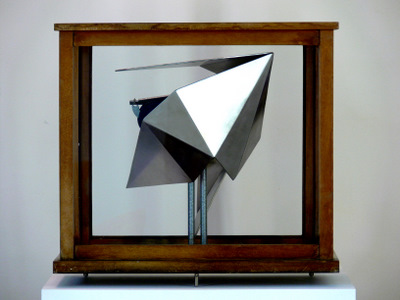 |
|
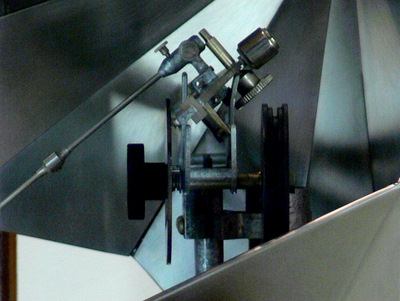 |
| |
|
|
|
|
| |
|
|
|
|
Inhabitation 0.795
Stainless steel, scientific weighing balance, reconstructed vintage laboratory instrument cabinet
2011 (42 h x 46 x 30cm) |
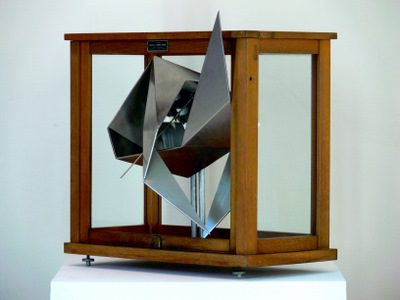 |
|
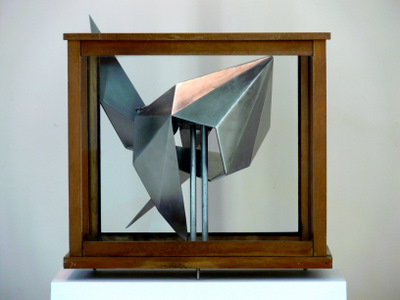 |
| |
|
|
|
|
| |
|
|
|
|
Dream of the Rood
More information
Stainless steel, cast iron, brass, wood, glass, reconstructed vintage laboratory instrument cabinet
2011 (53 h x 40 x 21cm) |
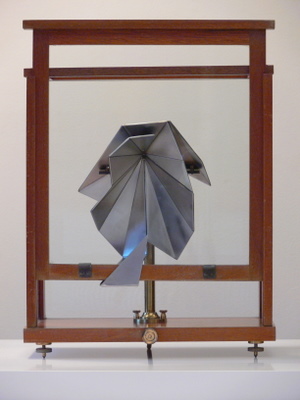 |
|
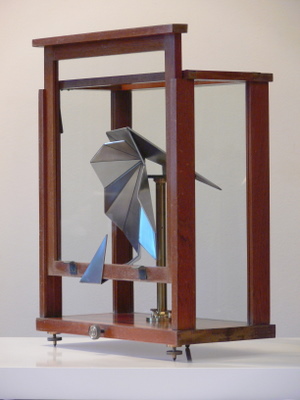 |
| |
|
|
|
|
The 'Dream of the Rood' is an ancient Christian alliterative poem and one of the oldest works of English literature. 'Rood' is from the Old English word 'rod', meaning pole or crucifix. It is an example of 'dream' poetry in which the narrator speaks with the cross and the crucifixion is described from the cross's perspective - the nails pierce the flesh of the cross as well as that of Christ.
Since the Enlightenment, Christianity has been under assault - crucified on the cross of science and scientific discovery. As science reveals more about the world we inhabit so Christian beliefs and superstitions are pushed further into the darkness. The 'old' view of the natural world and our place in it is crucified on the 'new dogma'.
Science is based on precise measurements, central to which are the dimensions of size and weight. In the 19th Century, engineers developed the highly accurate analytical balance for laboratory use. 'Dream of the Rood' portrays a metaphorical Christ, nailed to the remains of an early brass analytical balance in its (reconstructed) instrument cabinet, attempting to stop the inexorable closing of the door – a containment of the 'old dogma'. |
| |
|
|
|
|
Modus operandi
Stainless steel, wood, glass, reconstructed vintage laboratory instrument cabinet
2011 (56 h x 43 x 33cm) |
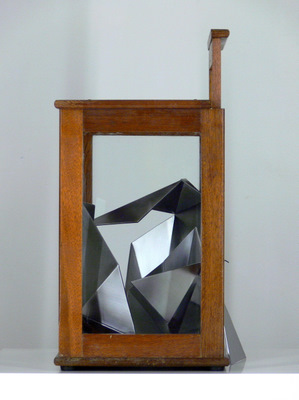 |
|
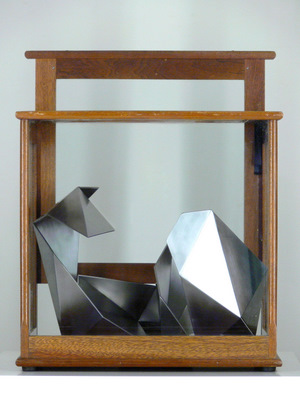 |
| |
|
|
|
|
| |
|
|
|
|
Vintage laboratory balance and cabinet
Early Griffin & Tatlock laboratory balance in mahogany cabinet
Griffin & George/Griffin & Tatlock since 1826, see here for more information |
 |
|
 |
| |
|
|
|
|
| |
Laboratory forms part of a cabinet of curiosities – an encyclopaedic collection of objects whose categorical boundaries are yet to be defined. These, often faked, objects belong to the world of natural history, geology, ethnography and relics, works of art and antiquities. Kunstkammer are microcosms of the 'theatre of the world', of recollections and of memory. A 'memory theatre' which addresses the nexus of science, industry, society, time and place and symbolically conveys the artist's control of the world through its indoor, microcosmic reproduction of that world.
These works are largely directly related to vintage science and scientific discoveries, the melding of old scientific instrumentation and museum display cases with biological artefacts represented in abstract steel. Mixed-in with these cases and Kunstkammer relics are bubble-wrapped objects awaiting unpacking and display, or maybe wrapped ready for removal to another space.
Some pieces inhabit a museum display case or aquarium (see related web pages) – unknown life-forms collected by an exploratory or scientific research vessel from the distant past, its taxonomy alluding to the nature of the thing inside and the remarkable journey made by the (real) ship. These are the sort of things one might still find when searching through the cellars and warehouses of a museum or an old industrial site where they might have been left when the building was abandoned, and bring us face-to-face with a now lost world of science and discovery.
The ones on this page are associated with vintage scientific instrumentation from the early part of the last century – for example, encrusting curious brass balances in rebuilt mahogany cabinets. Explicitly creating a microcosmic theatre of the world through symbiotically combining intact industrial and scientific objects and equipment with fabricated biota – strange constructs made through the fabrication and manipulation of objects and materials. An evolving inhabitation of the objects and equipment. A displayed specimen of a strange amalgamation of the natural with the man-made. The metallic remains of some biota resting on parts of vintage scientific instrumentation, in association with a found natural object (see related web pages). A 'take' on the sort of faked 'natural artefacts' made famous by the original Kunstkammer. |
|
| |
|
|
|
|
| |
|
|
|
|
|